Ever since the July 16, 2007 Niigata-Chuetsu-Oki Earthquake, TEPCO has been taking various measures to strengthen the Kashiwazaki-Kariwa Nuclear Power Station against disaster. We are inspecting and evaluating all facilities, implementing the necessary restoration work, and improving seismic safety. We are applying the same initiatives to the Fukushima Daiichi and the Fukushima Daini Nuclear Power Stations, and have also incorporated the necessary considerations in the application for the construction of a nuclear reactor at the Higashidori Nuclear Power Station.
At the Kashiwazaki-Kariwa Nuclear Power Station, we are re-calculating earthquake motion for the purpose of increasing earthquake resistance, and are applying seismic reinforcement work to all seven units, to improve seismic safety at the power station.
At the Fukushima Daiichi and Daini Nuclear Power Stations, we are confirming the seismic safety of all major equipment and facilities of high safety significance in all ten units. Based on the knowledge we gained through the Niigata-Chuetsu-Oki Earthquake, we are also making ongoing efforts to improve the seismic capacity of these power station.

Based on the experience in being unable to enter many buildings at our power plants during the Niigata-Chuetsu-Oki Earthquake, we have constructed seismic-isolated buildings that house an emergency response center and other important communications and power supply facilities that would provide the necessary foundation for disaster prevention activities in times of disaster. The seismic-isolated building at the Kashiwazaki-Kariwa Nuclear Power Station commenced operations in January 2010, and those at the Fukushima Daiichi and Daini Power Stations commenced operations in July 2010.
The seismic-isolated buildings feature an earthquake-proof structure in which a rubber or flexible soft material (antiseismic device) placed between the building and the ground foundation absorbs earthquake tremors. They are designed so that emergency responses could be managed even if an intensity-7 earthquake exceeding the Niigata-Chuetsu-Oki Earthquake occurs.
 Seismic-isolated building at the Kashiwazaki-Kariwa Nuclear Power Station
Seismic-isolated building at the Kashiwazaki-Kariwa Nuclear Power Station
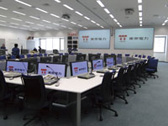 Emergency response center at the Kashiwazaki-Kariwa Nuclear Power Station
Emergency response center at the Kashiwazaki-Kariwa Nuclear Power Station
We also provide various training programs on a regular basis, including training based on nuclear disaster simulation and firefighting training for power plant personnel.
 Fire station deployed at a power station
Fire station deployed at a power station
 Operational training of a disaster prevention organization
Operational training of a disaster prevention organization
Mari Sato
Disaster Prevention and Safety Group,
Disaster Prevention and Safety Division,
Fukushima Daiichi Nuclear Power Station
Being involved in the planning and implementation of firefighting training, I firmly believe that any action that cannot be performed during regular training cannot be performed when it really counts, so it is important to repeat the necessary actions and make the body memorize them through training. My heart fills with pride as I watch members of the firefighting team apply themselves to rigorous training, wearing hot and heavy protective gear even in the summer.
As a member of our power station, I, too, apply myself to my daily duties to ensure safety, with strong, unwavering determination to "protect our workplace by ourselves" without fail.

TEPCO's nuclear power station are committed to ensuring not only facility safety, but also safe operations by personnel. Through simulation training and simulated experiences of past errors, efforts are made to minimize human errors and to prevent or promptly detect abnormal incidents, for the safe and stable operations of nuclear power station.
At nuclear power station, outstanding operators and maintenance staff need to be secured and their skills must consistently be improved, to maintain facility soundness and continue safe operations.
The Skills Training Center is equipped with the same types of equipment and devices that are actually used in our power station, and allows TEPCO employees and employees of cooperating companies to acquire knowledge of nuclear power and to improve technologies and skills for nuclear plant operations and maintenance.
 Skills Training Center (Fukushima Daiichi Nuclear Power Station)
Skills Training Center (Fukushima Daiichi Nuclear Power Station)
 Simulated reactor (Fukushima Daiichi Nuclear Power Station)
Simulated reactor (Fukushima Daiichi Nuclear Power Station)
We provide a training program called "Classes for Learning from mistakes," to prevent workers from making the same mistakes they have made before.
The program aims to increase awareness of safety among all workers engaging in nuclear power station operations, by providing simulated experiences of past errors using special simulation devices.
Begun in 2007 as a recurrence prevention initiative, the program has since expanded, so that it now offers a curriculum of 23 topics.
Simulated experience of radioactive substance contamination

At the Kashiwazaki-Kariwa Nuclear Power Station, we are inspecting, restoring, and applying seismic reinforcement work, and otherwise confirming the safety of all units, and are sequentially recommencing commercial operations of units that have received approval from the central and local governments.
So far, we recommenced commercial operations at Unit 7 in December 2009, Unit 6 in January 2010, and Unit 1 on August 4, 2010.
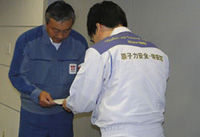 Receiving a completion certificate of regular inspections (Unit 1)
Receiving a completion certificate of regular inspections (Unit 1)
 General load performance inspection (Unit 1)
General load performance inspection (Unit 1)
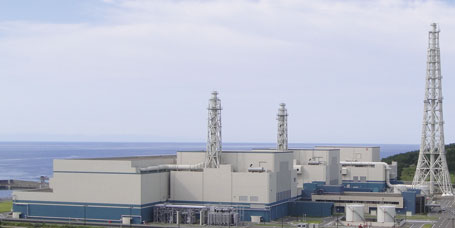 Units 7 (in front) and 6 (center) after recommencement of commercial operations
Units 7 (in front) and 6 (center) after recommencement of commercial operations
Inspections, evaluations, and seismic reinforcement work are being carried out in a careful and steady manner, while ensuring safety and fire prevention.
Building, structure, and equipment inspections, seismic reinforcement work, and system function tests have been completed.

Seismic reinforcement of pipe supports (Unit 3)
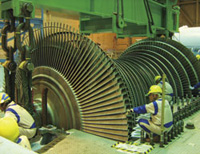
Turbine inspection and restoration (Unit 4)
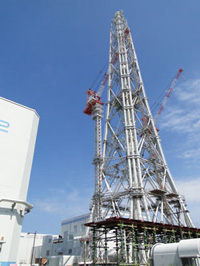 Seismic reinforcement work on the reactor building overhead crane (Unit 3)
Seismic reinforcement work on the reactor building overhead crane (Unit 3)
© Tokyo Electric Power Company Holdings, Inc.